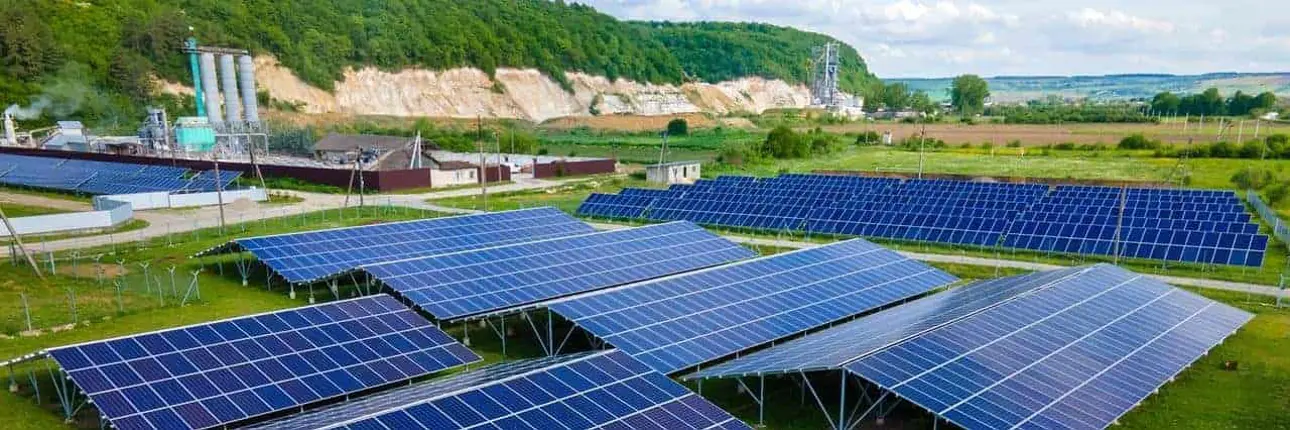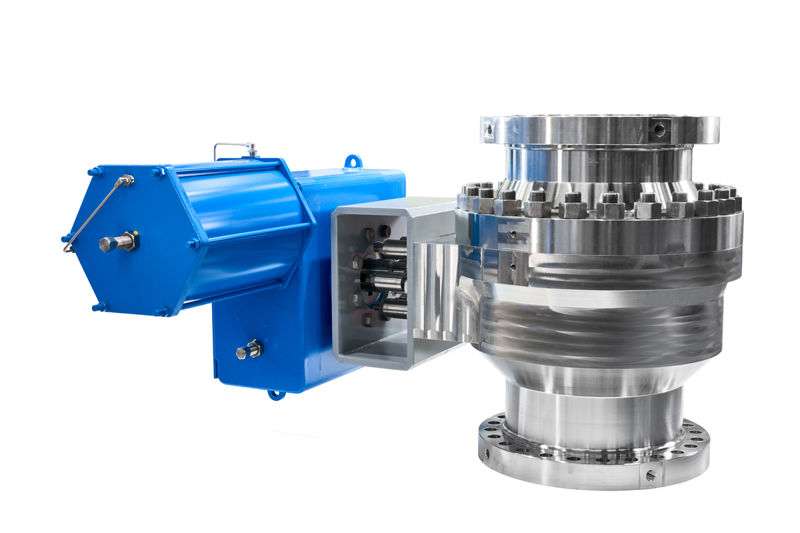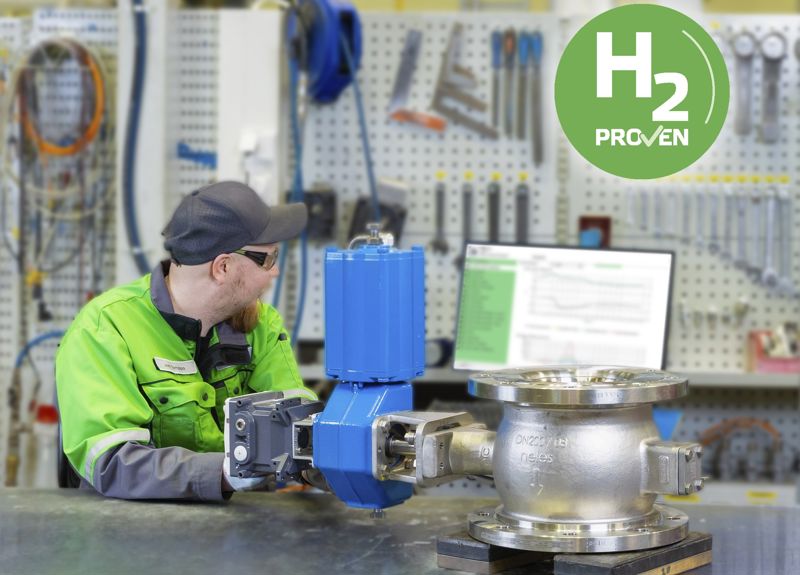Valmet advances valve technology
Dec 12, 2024
Valmet has established itself as a global leader in flow control solutions and services, with a rich history spanning nearly 70 years. The flow control journey began in 1956 when Neles Oy was born out of a passion for valve products and services. This long experience has proven that true reliability is achieved through years of dedication and continuous innovation.

The company’s expertise extends far beyond the energy transition sector, encompassing a wide range of process industries. Valmet’s valves, valve automation, and pump technologies are renowned for their quality, reliability, and highest safety standards, serving diverse sectors including pulp and paper, bioproducts, renewable energy, oil and gas refining, mining and metals processing, chemicals, and various other process industries.
In this exclusive interview, Valve World speaks with Ville Kähkönen, Director of Renewable Energy and Gases, and Andreas Pischke, Global Industry Manager for Renewable Energy and Gas. These industry veterans offer insights into Valmet’s innovative solutions and their significant impact across various industrial sectors. Kähkönen, with over 15 years of experience in flow control technologies, brings a wealth of knowledge in renewable energy applications. Pischke, having spent two decades specializing in industrial gas systems, offers a unique perspective on the challenges and opportunities in the evolving industrial landscape. Together, they provide a comprehensive view of Valmet’s strategies and technologies that are shaping the future of industrial flow control.
Valmet leads the field in managing industrial fluid control, with innovative solutions across their product line. The Neles 6D ball valve family stands out as a prime example, showcasing the company’s dedication to creating reliable, high-performing equipment that meets the diverse needs of multiple industries.
Neles 6D ball valves provide the necessary reliability for end users
The Neles 6D product family offers a comprehensive solution for API 6D compliant ball valves and API 6DX-compliant actuators, covering a wide range of sizes and variants. This versatility makes it a one-stop-shop for customers across various industries, all while meeting global standards and codes.
Kähkönen emphasises the importance of reliability in valve design: “In our industry, reliability is paramount. We only bring products to market that are based on field-proven technologies and have undergone rigorous testing in our state-of-the-art labs.” In addition, they are also certified by independent third parties to be capable for SIS applications.” This commitment to reliability ensures that Valmet’s customers can trust the Neles 6D valves to perform consistently in any given application.
Many of Valmet’s unique flow control innovations have stood the test of time, becoming industry standards. This is particularly true in the pulp and paper industry, where several of their solutions have significantly improved processes and set new benchmarks.
One of the key innovations in the Neles 6D family is its ease of integration with smart technologies. API 6DX actuators and smart controllers with advanced diagnostics and predictive maintenance capabilities can be easily integrated with the Neles 6D,” Kähkönen explains. “This allows our customers to monitor valve performance in real-time, predict potential issues before they occur and optimise their maintenance schedules.”
The Neles 6D also stands out for its sustainable environmental performance. “These valves are designed to be fire safe and virtually emission-free,” Pischke notes.“This makes them an excellent choice for customers in the growing renewable energy industry and hydrogen industry where safety and environmental concerns are paramount.”
To further enhance the customer ex-perience, Valmet offers the Nelprof sizing and selection tool. “This cloud-based online sizing tool helps our customers get the sizing just right,” Kähkönen says. “It’s part of our commitment to providing not just a product, but a complete solution that includes support throughout the valve’s lifecycle.”
Neles XH ball valves design features

Neles XH ball valves design features
One of the most notable improvements in the Neles XH is its reduced size and weight. “We’ve managed to decrease the valve’s weight and dimensions without compromising on reliability, robustness or performance,” Kähkönen explains. “It’s like the valve has lost fat without losing any muscle.”
“The carbon footprint of the Neles XH is significantly lower than traditional valves of similar capacity,” Pischke adds. “This aligns with our customers’ increasing focus on reducing their environmental impact across their supply chains.”
The valve’s design also facilitates easy maintenance, with readily accessible wear parts. “We’ve designed the Neles XH with serviceability in mind,” Kähkönen says.
“This not only reduces downtime for our customers but also extends the overall lifecycle of the valve, further contributing to its sustainability.”
“Operational safety is a given for any industrial valve,” Pischke notes. “But with the Neles XH, we’ve taken it a step further by improving safety during manufacturing, transportation, handling and installation.” This comprehensive approach to safety in-cludes features like new detachable lifting mounts for larger valves, improving manoeuvrability and safety during installation.
The Neles XH is particularly well-suited for demanding applications in the oil and gas and petrochemical industries. “We’ve seen excellent performance in high-pressure, high-temperature hydrogen applications,” Kähkönen reports. “So, what’s really exciting is how well it will perform in renewable energy applications, particularly in blue and green hydrogen production.”
The valve’s versatility is further enhanced by its range of material options. “We offer the Neles XH with various proven valve body material technologies and coatings, including our proprietary Q-trim technology,” Pischke explains. “This allows us to tailor the valve to specific process conditions, ensuring optimal performance and longevity.”
Innovative butterfly valve enhances Valmet’s offerings
Among Valmet’s recent innovations is the introduction of what many consider the most versatile butterfly valve on the market. The new platform delivers new functionality while leaning on field-proven technologies, offering a solution for extensive range of applications, superior process efficiency and a minimised environmental footprint. Its robust and reliable design, coupled with ease of maintenance throughout its entire lifecycle and an infinite number of configurations, has generated significant interest across various industries.
“This new butterfly valve represents our commitment to continuous innovation and customer success,” Kähkönen explains. “We’ve taken a well-established valve type and reimagined it to meet the evolving needs of modern industrial processes.
Valmet integrates sustainability across operations
Sustainability is not just a buzzword for Valmet; it’s a fundamental principle guiding their operations and product development across all business areas. This commitment is exemplified by innovations like the Neles NDX 2.0 intelligent valve controller.

Neles NDX intelligent positioner offers a linkage-less design, a full suite of diagnostic capabilities and extremely low air consumption.
“The Neles NDX 2.0 represents what we call ‘sustainability 2.0’,” Kähkönen explains. “It can potentially reduce air consumption by up to 90% compared to competing valve positioners. This translates into significant reductions in energy consumption and CO2 emissions.”
To help customers quantify these benefits, Valmet offers an online calculator for estimating potential savings. “We’ve made it easy for our customers to see the real-world impact of the NDX 2.0,” Pischke adds. “Our online calculator allows them to input their specific parameters and see the potential energy and cost savings.”
But the benefits of the NDX 2.0 go beyond just energy efficiency. Pischke elaborates, “The improved control performance and superior accuracy of the NDX 2.0 have a substantial impact on process quality and output. This leads to better yield and profitability due to reduced process variability.”
The NDX 2.0’s versatility is another key feature. “It’s a universal solution that works well with both linear and rotary valve applications,” Kähkönen notes. “This opens up possibilities for numerous customer segments to benefit from smart valve control technology.”
Valmet’s commitment to sustainability extends far beyond individual products. Pischke explains, “When we look at valves from a sustainability perspective, three key aspects stand out: emissions, internal tightness and lifecycle view. We’re constantly improving our capabilities in these areas.”
Emissions control is a critical focus. “By eliminating fugitive emissions into the atmosphere, we’re not just reducing local health and safety risks on-site, but also minimising the environmental impact of the process on our climate at large,” Kähkönen says.
Internal tightness is equally important. “Ensuring internal tightness helps eliminate waste of valuable flow media and energy consumed by pumps in the process,” Pischke notes. “In flaring processes used to release pipeline pressure, ensuring we’re not releasing anything extra into the atmosphere is crucial.”
The lifecycle view is integral to Valmet’s approach to sustainability.
“We consider the entire lifecycle, from manufacturing to end-of-life.
This includes running longer tests on all our valves to ensure sustained tightness and durability of wear parts over time.” Valmet applies eco-friendly practices to its manufacturing processes as well. “We use predominantly recycled metal in valve production and ensure that correct recycling markings and instructions are always found on our products,” Kähkönen adds. “We’re also constantly looking for ways to reduce waste and energy consumption in our production facilities.”
The company is also driving the development of valve materials and coatings to meet the demands of new and emerging industries. “We’re seeing a wider range of feedstock being refined in new biofuel production processes,” Pischke notes. “Our materials research is focused on developing solutions that can handle these challenging new environments while maintaining our high standards of performance and durability.”

Valmet launched its first digital valve controller in 1996 demonstrating a long history of expertise and innovation in flow control technology.
Solutions for energy transition and advanced automation
Valmet develops advanced valve and automation solutions for a wide range of process industries, with a particular focus on renewable energy applications. Their expertise spans various sectors, including pulp and paper, bioproducts, oil and gas refining, mining and metals processing, and chemicals.
“Hydrogen is set to play a major role in the energy transition,” Pischke states. “While it’s emerging in the public arena now, we’ve been working with hydrogen for decades in sectors like refining and chemicals.” This long-standing experience gives Valmet a significant advantage in addressing the unique challenges posed by hydrogen applications. Kähkönen elaborates on these challenges: “Hydrogen is the smallest molecule, which makes fugitive emissions a critical concern. We’ve developed specialised packing and seal solutions to address this. Additionally, we have to consider the potential for hydrogen embrittlement in our material selection process.”
Valmet’s work with oxygen has prepared them well for hydrogen applications. “We’ve installed over 30,000 valves for oxygen use globally. This experience gives us a strong foundation for tackling hydrogen-related challenges,” Kähkönen notes.
The company’s valves have been proven in both atmospheric alkaline pressure and pressurised alkaline electrolysers. For SOECs high temperature valve solutions are available. “Our segment, butterfly, ball and other designs cover practically all valve needs in the energy transition, whether for hydrogen, oxygen or carbon dioxide service,” Kähkönen adds.
Pischke highlights Valmet’s involvement in cutting-edge projects: “We’re supplying valves for green hydrogen production facilities and carbon capture projects. Our valves are being used in various Direct Air Capture plants, supporting the growing carbon capture industry.”
Valmet’s expertise extends beyond valve design to comprehensive automation solutions, including both plant-wide control systems and valve-specific automation. Their Valmet DNA Automation System stands out as a comprehensive solution for the growing hydrogen industry and other process sectors.
“What sets Valmet apart is our ability to provide both valve and automation systems,” Pischke explains. “This integrated approach offers significant advantages to our customers. By choosing Valmet as a supplier for both valves and automation systems, customers benefit from seamless compatibility and optimised performance across their control and valve systems.”
Another service Valmet offers is for valve OEM and skid manufacturers who require engineered valve automation solutions for their own valves. By leveraging Valmet’s qualified experts and decades of experience, customers receive precise configuration for their valve. The company’s centrally located valve automation centre in Germany allows for rapid response to customer needs across Europe.
“Our modular design in valve automation allows us to quickly adjust orders when specifications change,” Pischke notes. “This adaptability sets us apart in the market.” The Neles N1 series heavy-duty scotch yoke actuator and Neles B1 series pneumatic cylinder actuators exemplify Valmet’s valve automation capabilities.
These “top works” can be easily configured to suit a wide range of applications and industrial requirements. Valmet’s approach to both plant wide automation and valve automation considers sustainability. “The optimised plant layout in our German facility and our advanced logistics design aren’t just about making our customers’ lives easier,”
Pischke concludes. “We’re also minimising the environmental impact of our operations by shipping small parts in bulk and providing short transportation routes for heavy assemblies within Europe.”
Advancing sustainable solutions across process industries
Industries worldwide face significant challenges in sustainability and energy transition. Valmet’s innovative technologies play a key role in addressing these challenges.
The company’s offerings, from the reliable Neles 6D and innovative Neles XH ball valves to their comprehensive automation systems and valve-specific automation solutions, are setting new standards across many process industries.

Valmet has proven expertise in demanding applications like hydrogen and oxygen service. However, their capabilities extend well beyond the energy sector. Their solutions serve a wide range of industries including pulp and paper, bioproducts, oil and gas refining, mining and metals processing, and chemicals.
The company’s strong commitment to sustainability and innovation puts them at the forefront of industrial technology development. As Kähkönen explains, “Our main goal is to provide value for our customers across all process industries by being a dependable, long-term business partner. Whether we’re supporting energy transition efforts or improving traditional industrial processes, our commitment continues long after the equipment is delivered, lasting throughout its entire lifespan.”
This comprehensive approach, combining expertise in valve technology, automation systems, and a deep understanding of various industrial processes, makes Valmet a significant contributor to efficiency, sustainability and innovation in process industries.
Melonie Dodaro, KCI Publishing.
Article originally published as the cover story of Valve World Conference 2024 Brochure: Valmet advances valve technology

Andreas Pischke
Global Industry Manager
Valmet Flow Control business line



